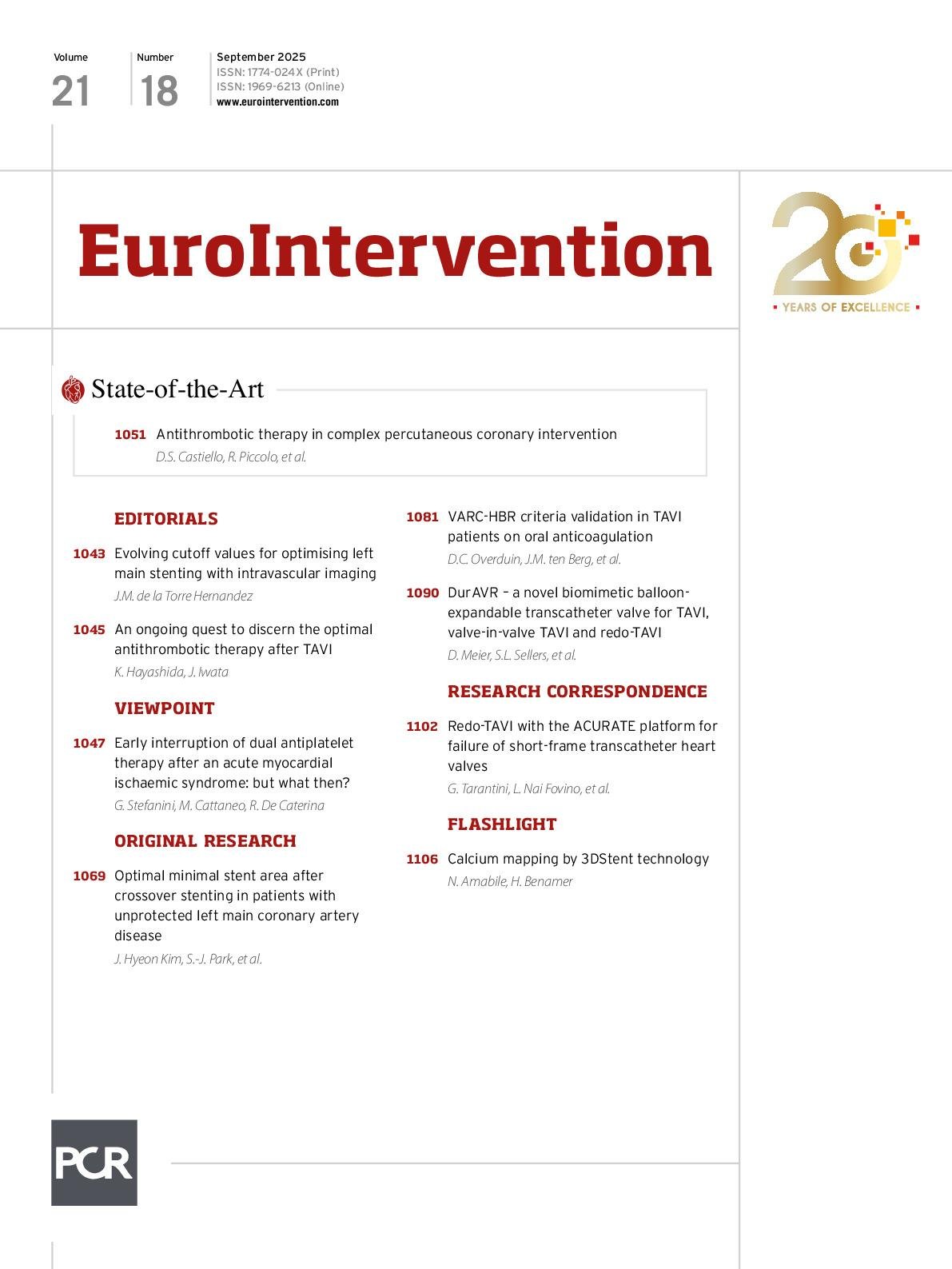Cory:
Unlock Your AI Assistant Now!
In this issue of EuroIntervention, Overduin and colleagues evaluate the Valve Academic Research Consortium High Bleeding Risk (VARC-HBR) criteria1 for risk stratification and prediction of 30-day major bleeding risk in patients undergoing transcatheter aortic valve implantation (TAVI) with a concomitant indication for oral anticoagulation. The VARC-HBR criteria enabled the effective identification of three major bleeding risk subgroups in this study. Severe femoral artery calcification and tortuosity, anaemia, and conversion to open heart surgery were identified as the most contributive criteria. Patients who undergo TAVI are likely to be elderly and severely frail, and, given that periprocedural bleeding events are sometimes associated with fatal complications, bleeding risk stratification before TAVI is therefore essential. This study sheds light on current clinical practice to predict and avoid bleeding events during TAVI2.
One of the high bleeding risks in this study was severe calcification and tortuosity of the access vessels. Such poor vessel condition indicates severe arteriosclerosis, inevitably contributing to increasing not only bleeding but also thromboembolic risks. In the POPular PAUSE TAVI trial, bleeding events were more frequently observed in the periprocedural continuation group than in the interruption group3. On the other hand, that trial was not designed to assess the benefit of anticoagulation for thromboembolic events. The authors discuss that considering the risk for thromboembolic events with respect to a patient's underlying vascular or cerebrovascular diseases, the risk-benefit ratio of anticoagulation for patients with TAVI may differ from that of the general population. It is necessary to tailor treatment strategies based on the balance of bleeding and thromboembolic risks for each patient.
An appropriate antithrombotic therapy after TAVI still remains unclear. The current guidelines recommend single or double antiplatelet therapy after TAVI to potentially prevent hypoattenuated leaflet thickening (HALT), meaning leaflet thrombosis4. However, HALT within 30 days after TAVI may not be associated with patients’ prognosis or haemodynamic performance during long”term follow”up, although further clarification is needed56. Moreover, given that the non-antithrombotic strategy after TAVI has suggested no association with an increased risk of cardiovascular death, stroke, myocardial infarction, or bleeding, it may be an acceptable alternative to the current antithrombotic therapy after TAVI7. We are now conducting a randomised controlled trial comparing an aspirin group with a group without any antiplatelet therapy in patients without an indication for oral anticoagulation (the NAPT trial; ClinicalTrials.gov: NCT06007222), which has the potential to offer new perspectives into anticoagulant therapy after TAVI in the future8.
Lastly, this study included around 30% of female patients in each category. However, elderly women tend to be at higher bleeding risk. It would be beneficial to verify the outcomes in a larger cohort, including Asian patients or more female patients with higher bleeding risk.
In summary, the study by Overduin et al reveals that the assessment of bleeding risk after TAVI as measured by VARC-HBR criteria is effective. The stratification of bleeding risk is essential for patients who undergo TAVI to prevent fatal bleeding complications. Further studies are necessary to identify the optimal antithrombotic treatment strategies to minimise adverse events after TAVI.
Conflict of interest statement
K. Hayashida is a clinical proctor for Edwards Lifesciences, Abbott, and Medtronic. J. Iwata has no conflicts of interest to declare.

